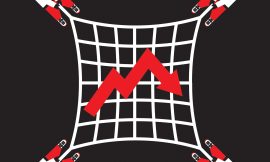EU Trade Commissioner Maroš Šefčovič has asked the US to delay the implementation of tariff rises on European exports to allow time for talks to reduce and even eliminate tariffs in key sectors of EU–US trade.
Speaking in Washington after meeting with the US Commerce secretary Howard Lutnick, the White House economic advisor Kevin Hassett, and nominee for Trade Representative Jamieson Greer, Mr Šefčovič said the main issue for the America side was reciprocity in tariffs and non-tariff barriers affecting trade for both sides.
He said the EU already has a very low average tariff rate on imports from the US, but is willing to start talks immediately on reducing tariffs on manufactured goods, notably in the automobile sector, where the EU has a 10% tariff on car imports from America, and light trucks, where the US imposes a 25% tariff.
He also said he had presented the American side with a list of tariffs and technical barriers to trade that the EU said discriminate against EU exports to the US, and which it would like changed.
He played down talk of retaliatory action against any new US tariffs, saying he wanted to keep the focus on positive engagement to boost trade between the world’s two biggest trading partners.
The two sides also talked about the regulation and taxation of digital companies, saying he pointed out to the US side that some of the big US digital companies have more customers in the EU than they do in the US.
He also said most of the cases being taken against the very large US digital companies under EU competition law were by small US companies who claim they are being treated unfairly by the big players.
But he said there was a need to explain more to the US side the ideas and philosophy behind how the EU regulates online companies, notably around the concept that if something is illegal offline, it should be illegal online as well.
‘Internet censorship’
A number of leading figures in the Trump administration and the wider MAGA movement have attacked what they call internet censorship in the EU, claiming European laws are an attack on freedom of speech.
Mr Šefčovič said the issue was to figure out “how can we work with these big companies to make sure that if it’s dangerous or illegal content it should be removed”.
Tech billionaires Elon Musk and Mark Zuckerberg have strongly criticised the EU laws on content moderation, which require companies such as X and Facebook to spend money on content moderators.
When asked if he had found out what the main US objective is, Mr Šefčovič said: “I would say the top objective as it was presented to us yesterday by our American partners is reciprocity on tariffs.
“We also covered the issue of non-tariff barriers. Here the US has the list of grievances, but I also handed over our list of grievances where we simply couldn’t resolve some of the issues for years.”
Value added tax
Last night President Trump repeated his criticism of value added tax in the EU, saying it was in effect another tariff on US exports.
Mr Šefčovič’s efforts to explain VAT to the Americans does not appear to have changed their opinion, saying he would have to continue to explain to them that VAT is a tax on consumption, not on imports, and compared it to sales tax in the US.
“It’s clearly of non-discriminatory nature, and the companies are not paying it. They’re reimbursed, and this is a tax which is paid by the by the final consumer. But it’s an issue because it’s on the table, we discussed it, and I cannot say that we resolved this issue, because that’s clearly something that is very high on the agenda of our partners.”
He said the two sides had plenty to report back to their political bosses, but he hoped to be able to move fast on a number of issues in order to build positive momentum and avoid what he called “the pain of measures and countermeasures”.
But he added, “if you are hit, you have to react”.
Read more: Trump says to introduce 25% tariffs on cars, pharma
Trade balance
Mr Šefčovič said it was very important to establish personal relations with the new US trade team, and his meeting with Mr Lutnick happened on his very first day in the job as US Commerce Secretary.
Overall, he said the trade balance between the US and the EU can be closed relatively easily.
Acknowledging that both sides have their own figures, Mr Šefčovič said the EU has a goods trade surplus of about $150 billion (€143 billion), while the US has a service trade surplus of about $100 billion. The $50 billion difference was, he said, about 3% of the $1.6 trillion trade relationship between the EU and US.
He said one way to narrow the cap was to increase the amount of liquified natural gas the EU buys from the US.
In the previous commission, Mr Šefčovič was responsible for sourcing alternative gas supplies for Europe when it ended the import of gas from Russia over the Ukraine war. The EU is now the main export destination for US LNG exports, but Mr Šefčovič said there was a demand for a lot more LNG in the EU.
“I think that if you have to resolve $50 billion, we can really do it, if we put our mind into it. And I believe relatively quickly. And so, I think that we just need continue to talk, to use the momentum, which I hope we generated yesterday, and to focus on the positive agenda, and not on measures and countermeasures,” he said.
He also warned of spillover effects on wider global trade if there was a trade war between the US and the EU due to the sheer scale of the relationship, which represents about 30% of all world trade.




